Abstract
Extracellular polysaccharide (EPS) has long been regarded as one of the most important factors involved in wilting of plants by Pseudomonas solanacearum. By means of transposon Tn5 mutagenesis, we have isolated a class of mutants that have an afluidal colony morphology but retain the ability to cause severe wilting and death of tobacco plants. One such mutant, KD700, was studied in detail. By marker exchange mutagenesis, the altered colony morphology was shown to be the result of a single Tn5 insertion in a 14.3-kilobase EcoRI fragment. This defect could be corrected by introducing a homologous clone from a cosmid library of the wild-type, parental strain K60. The Tn5-containing fragment was introduced into other P. solanacearum wild-type strains by marker exchange, and these altered strains had the same afluidal phenotype as KD700. N-Acetylgalactosamine (GalNac), the major constituent of EPS of all wild-type strains of P. solanacearum, was not detected by gas chromatography-mass spectrometry analysis of vascular fluids from wilting plants infected by KD700. In contrast, GalNac was readily detected in similar fluids of plants infected by K60. Polysaccharides extracted from culture filtrates of KD700 contained approximately one-fifth of the GalNac present in polysaccharides from K60. No differences in growth rates in culture or in planta between the mutant and the parental strains were observed. Since strains that are deficient in EPS production can remain highly virulent to tobacco, we conclude that EPS, or at least its GalNac-containing component, may not be required for disease development by P. solanacearum.
Full text
PDF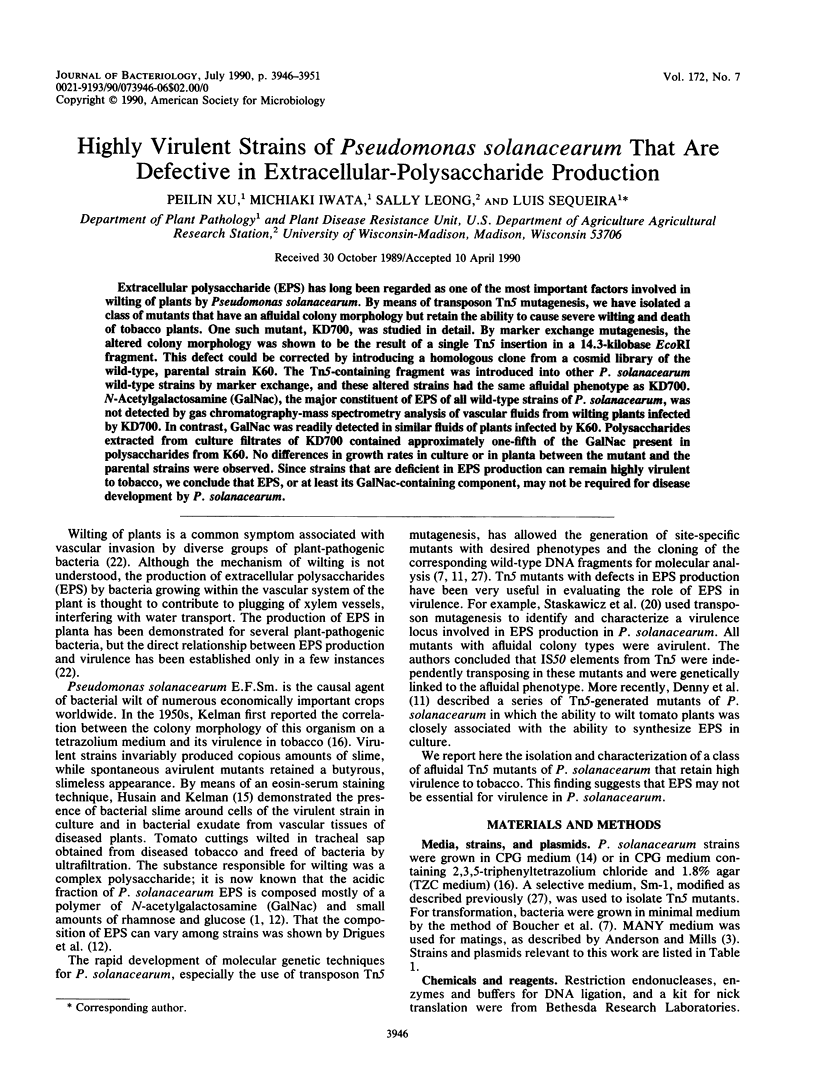
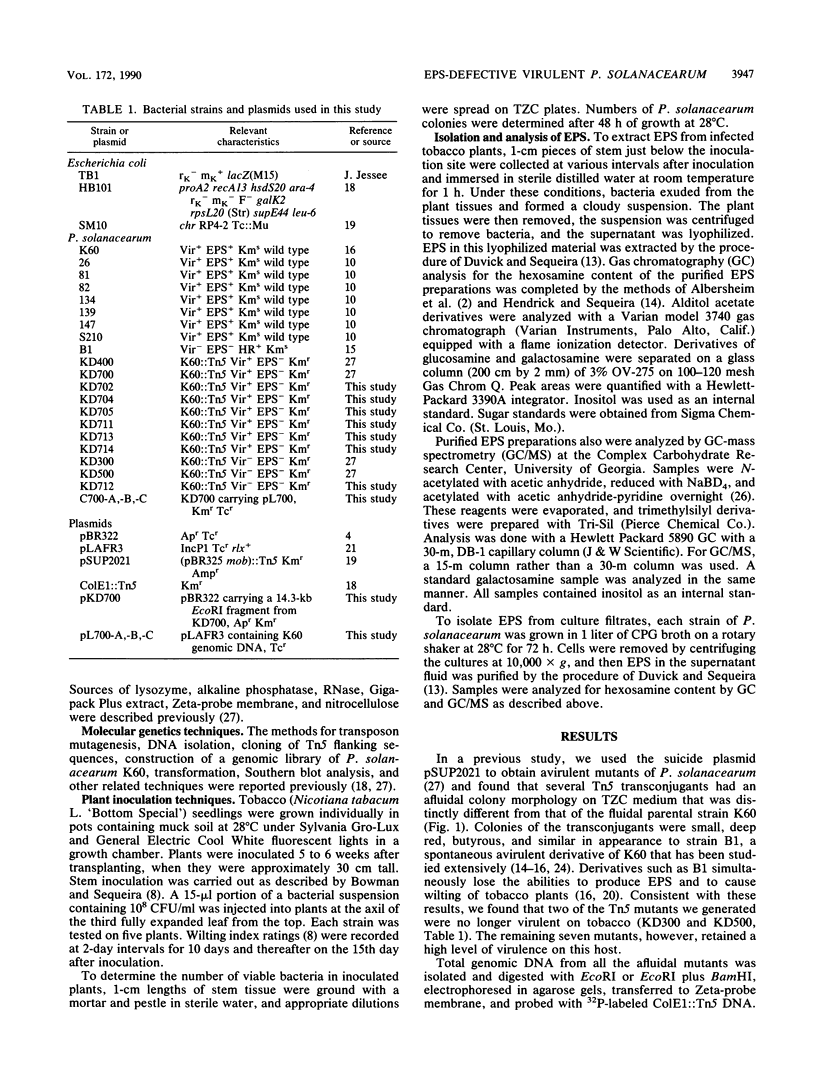
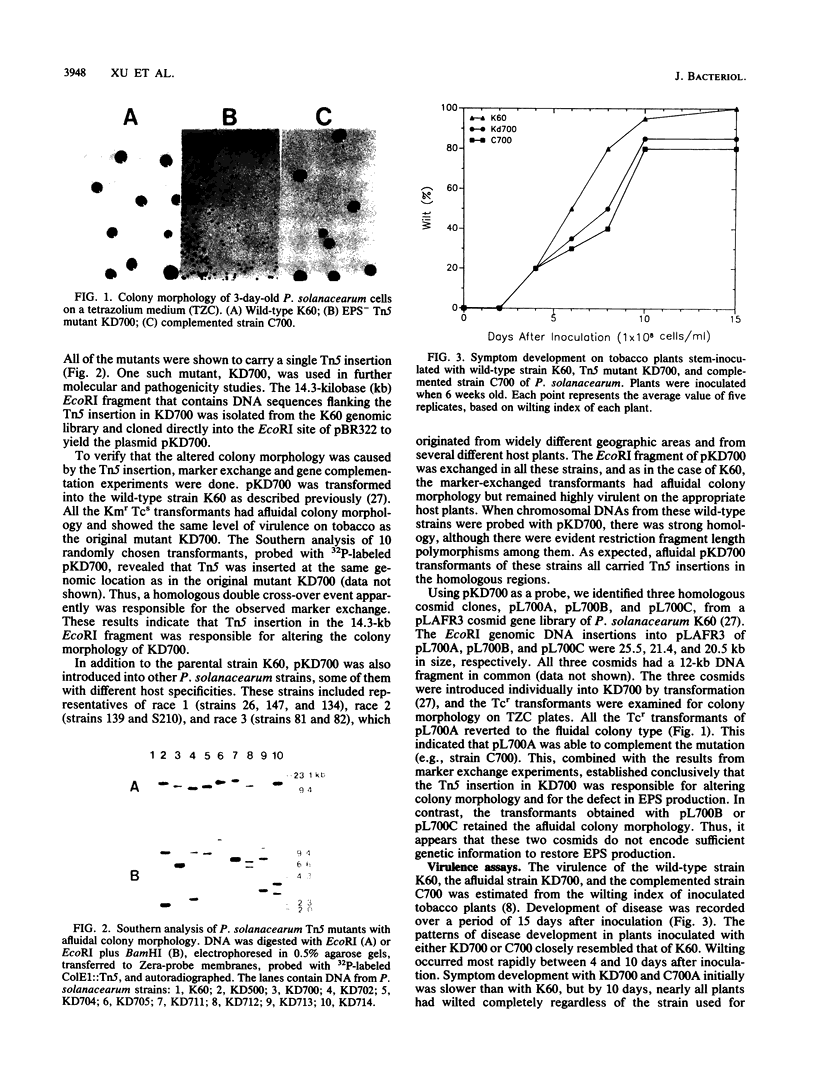
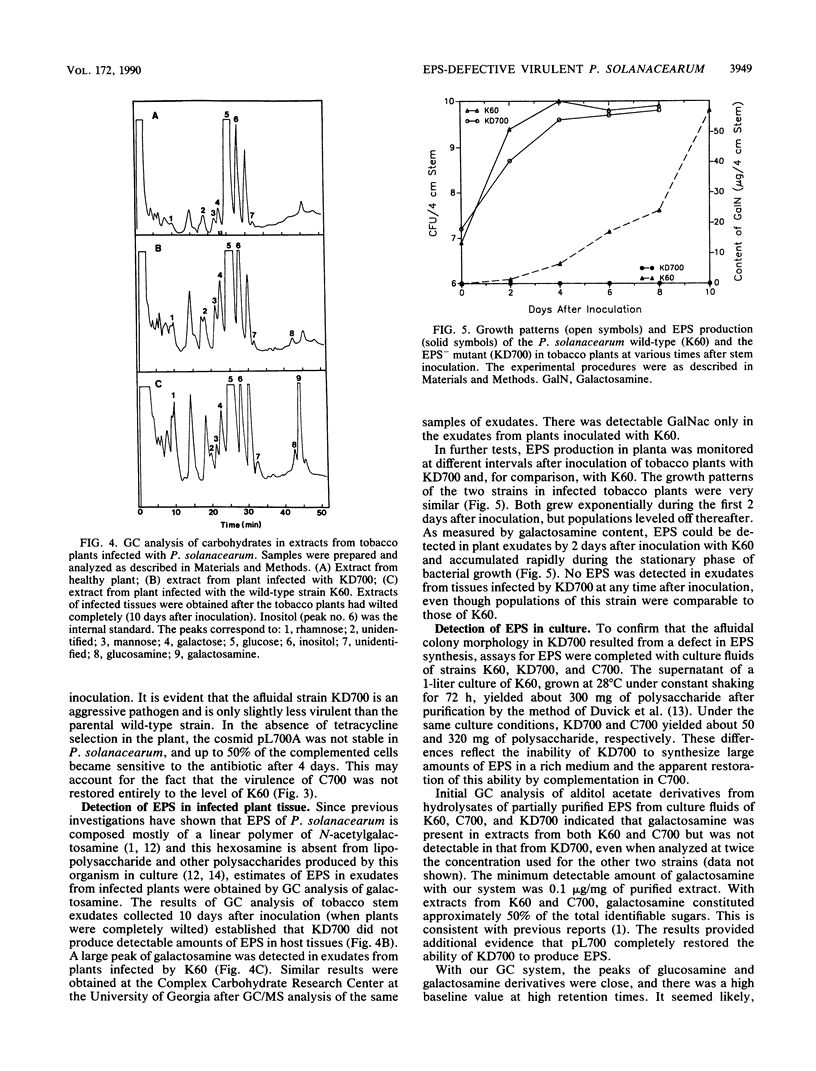
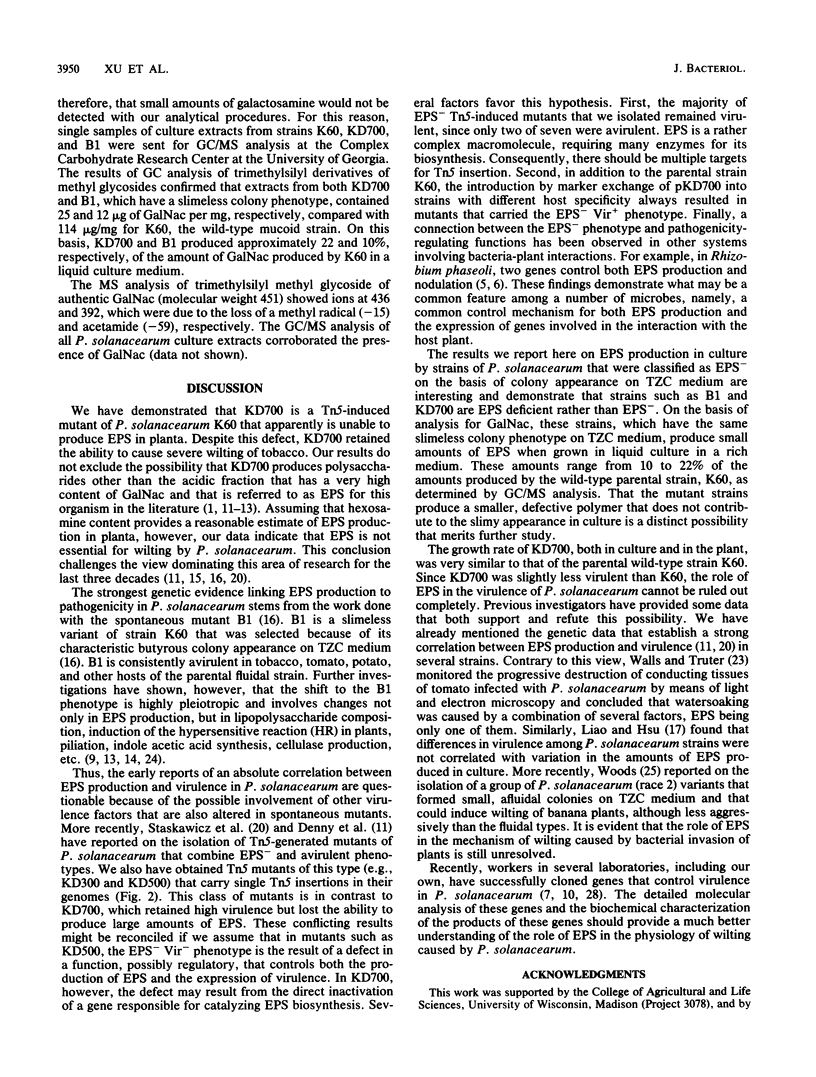

Images in this article
Selected References
These references are in PubMed. This may not be the complete list of references from this article.
- Bolivar F., Rodriguez R. L., Greene P. J., Betlach M. C., Heyneker H. L., Boyer H. W., Crosa J. H., Falkow S. Construction and characterization of new cloning vehicles. II. A multipurpose cloning system. Gene. 1977;2(2):95–113. [PubMed] [Google Scholar]
- Borthakur D., Johnston A. W. Sequence of psi, a gene on the symbiotic plasmid of Rhizobium phaseoli which inhibits exopolysaccharide synthesis and nodulation and demonstration that its transcription is inhibited by psr, another gene on the symbiotic plasmid. Mol Gen Genet. 1987 Apr;207(1):149–154. doi: 10.1007/BF00331502. [DOI] [PubMed] [Google Scholar]
- Drigues P., Demery-Lafforgue D., Trigalet A., Dupin P., Samain D., Asselineau J. Comparative studies of lipopolysaccharide and exopolysaccharide from a virulent strain of Pseudomonas solanacearum and from three avirulent mutants. J Bacteriol. 1985 May;162(2):504–509. doi: 10.1128/jb.162.2.504-509.1985. [DOI] [PMC free article] [PubMed] [Google Scholar]
- Duvick J. P., Sequeira L. Interaction of Pseudomonas solanacearum Lipopolysaccharide and Extracellular Polysaccharide with Agglutinin from Potato Tubers. Appl Environ Microbiol. 1984 Jul;48(1):192–198. doi: 10.1128/aem.48.1.192-198.1984. [DOI] [PMC free article] [PubMed] [Google Scholar]
- Hendrick C. A., Sequeira L. Lipopolysaccharide-Defective Mutants of the Wilt Pathogen Pseudomonas solanacearum. Appl Environ Microbiol. 1984 Jul;48(1):94–101. doi: 10.1128/aem.48.1.94-101.1984. [DOI] [PMC free article] [PubMed] [Google Scholar]
- Staskawicz B., Dahlbeck D., Keen N., Napoli C. Molecular characterization of cloned avirulence genes from race 0 and race 1 of Pseudomonas syringae pv. glycinea. J Bacteriol. 1987 Dec;169(12):5789–5794. doi: 10.1128/jb.169.12.5789-5794.1987. [DOI] [PMC free article] [PubMed] [Google Scholar]
- Whatley M. H., Hunter N., Cantrell M. A., Hendrick C., Keegstra K., Sequeira L. Lipopolysaccharide Composition of the Wilt Pathogen, Pseudomonas solanacearum: CORRELATION WITH THE HYPERSENSITIVE RESPONSE IN TOBACCO. Plant Physiol. 1980 Mar;65(3):557–559. doi: 10.1104/pp.65.3.557. [DOI] [PMC free article] [PubMed] [Google Scholar]
- Xu P. L., Leong S., Sequeira L. Molecular cloning of genes that specify virulence in Pseudomonas solanacearum. J Bacteriol. 1988 Feb;170(2):617–622. doi: 10.1128/jb.170.2.617-622.1988. [DOI] [PMC free article] [PubMed] [Google Scholar]




